
同大類學(xué)科其它級別期刊:
中科院 1區(qū) 期刊 JCR Q1 期刊 中科院 2區(qū) 期刊 JCR Q2 期刊 中科院 3區(qū) 期刊 JCR Q3 期刊 中科院 4區(qū) 期刊 JCR Q4 期刊Iet Nanobiotechnology SCIE
國際簡稱:IET NANOBIOTECHNOL 參考譯名:等納米生物技術(shù)
主要研究方向:工程技術(shù)-納米科技 非預(yù)警期刊 審稿周期: 12周,或約稿
《等納米生物技術(shù)》(Iet Nanobiotechnology)是一本由Wiley出版的以工程技術(shù)-納米科技為研究特色的國際期刊,發(fā)表該領(lǐng)域相關(guān)的原創(chuàng)研究文章、評論文章和綜述文章,及時報道該領(lǐng)域相關(guān)理論、實踐和應(yīng)用學(xué)科的最新發(fā)現(xiàn),旨在促進(jìn)該學(xué)科領(lǐng)域科學(xué)信息的快速交流。該期刊是一本開放期刊,近三年沒有被列入預(yù)警名單。
- 4區(qū) 中科院分區(qū)
- Q1 JCR分區(qū)
- 35 年發(fā)文量
- 3.8 IF影響因子
- 開放 是否OA
- 31 H-index
- 2007 創(chuàng)刊年份
- Bi-monthly 出版周期
- English 出版語言
Electrical and electronic engineers have a long and illustrious history of contributing new theories and technologies to the biomedical sciences. This includes the cable theory for understanding the transmission of electrical signals in nerve axons and muscle fibres; dielectric techniques that advanced the understanding of cell membrane structures and membrane ion channels; electron and atomic force microscopy for investigating cells at the molecular level.
Other engineering disciplines, along with contributions from the biological, chemical, materials and physical sciences, continue to provide groundbreaking contributions to this subject at the molecular and submolecular level. Our subject now extends from single molecule measurements using scanning probe techniques, through to interactions between cells and microstructures, micro- and nano-fluidics, and aspects of lab-on-chip technologies. The primary aim of IET Nanobiotechnology is to provide a vital resource for academic and industrial researchers operating in this exciting cross-disciplinary activity. We can only achieve this by publishing cutting edge research papers and expert review articles from the international engineering and scientific community. To attract such contributions we will exercise a commitment to our authors by ensuring that their manuscripts receive rapid constructive peer opinions and feedback across interdisciplinary boundaries.
IET Nanobiotechnology covers all aspects of research and emerging technologies including, but not limited to:
Fundamental theories and concepts applied to biomedical-related devices and methods at the micro- and nano-scale (including methods that employ electrokinetic, electrohydrodynamic, and optical trapping techniques)
Micromachining and microfabrication tools and techniques applied to the top-down approach to nanobiotechnology
Nanomachining and nanofabrication tools and techniques directed towards biomedical and biotechnological applications (e.g. applications of atomic force microscopy, scanning probe microscopy and related tools)
Colloid chemistry applied to nanobiotechnology (e.g. cosmetics, suntan lotions, bio-active nanoparticles)
Biosynthesis (also known as green synthesis) of nanoparticles; to be considered for publication, research papers in this area must be directed principally towards biomedical research and especially if they encompass in vivo models or proofs of concept. We welcome papers that are application-orientated or offer new concepts of substantial biomedical importance
Techniques for probing cell physiology, cell adhesion sites and cell-cell communication
Molecular self-assembly, including concepts of supramolecular chemistry, molecular recognition, and DNA nanotechnology
Societal issues such as health and the environment
Special issues. Call for papers:
Smart Nanobiosensors for Next-generation Biomedical Applications - https://digital-library.theiet.org/files/IET_NBT_CFP_SNNBA.pdf
Selected extended papers from the International conference of the 19th Asian BioCeramic Symposium - https://digital-library.theiet.org/files/IET_NBT_CFP_ABS.pdf
Iet Nanobiotechnology期刊信息
- ISSN:1751-8741
- 出版語言:English
- 是否OA:開放
- E-ISSN:1751-875X
- 出版地區(qū):ENGLAND
- 是否預(yù)警:否
- 出版商:Wiley
- 出版周期:Bi-monthly
- 創(chuàng)刊時間:2007
- 開源占比:0.2691
- Gold OA文章占比:69.12%
- OA被引用占比:0.0288...
- 出版國人文章占比:0.11
- 出版撤稿占比:0
- 研究類文章占比:77.14%
Iet Nanobiotechnology CiteScore評價數(shù)據(jù)(2024年最新版)
| CiteScore | SJR | SNIP | CiteScore 指數(shù) | ||||||||||||||||
| 6.2 | 0.512 | 0.707 |
|
名詞解釋:CiteScore 是衡量期刊所發(fā)表文獻(xiàn)的平均受引用次數(shù),是在 Scopus 中衡量期刊影響力的另一個指標(biāo)。當(dāng)年CiteScore 的計算依據(jù)是期刊最近4年(含計算年度)的被引次數(shù)除以該期刊近四年發(fā)表的文獻(xiàn)數(shù)。例如,2022年的 CiteScore 計算方法為:2022年的 CiteScore =2019-2022年收到的對2019-2022年發(fā)表的文件的引用數(shù)量÷2019-2022年發(fā)布的文獻(xiàn)數(shù)量 注:文獻(xiàn)類型包括:文章、評論、會議論文、書籍章節(jié)和數(shù)據(jù)論文。
Iet Nanobiotechnology中科院評價數(shù)據(jù)
中科院 2023年12月升級版
| Top期刊 | 綜述期刊 | 大類學(xué)科 | 小類學(xué)科 | ||
| 否 | 否 | 工程技術(shù) | 4區(qū) | BIOCHEMICAL RESEARCH METHODS 生化研究方法 NANOSCIENCE & NANOTECHNOLOGY 納米科技 | 4區(qū) 4區(qū) |
中科院 2022年12月升級版
| Top期刊 | 綜述期刊 | 大類學(xué)科 | 小類學(xué)科 | ||
| 否 | 否 | 工程技術(shù) | 4區(qū) | BIOCHEMICAL RESEARCH METHODS 生化研究方法 NANOSCIENCE & NANOTECHNOLOGY 納米科技 | 4區(qū) 4區(qū) |
中科院 2021年12月舊的升級版
| Top期刊 | 綜述期刊 | 大類學(xué)科 | 小類學(xué)科 | ||
| 否 | 否 | 工程技術(shù) | 4區(qū) | BIOCHEMICAL RESEARCH METHODS 生化研究方法 NANOSCIENCE & NANOTECHNOLOGY 納米科技 | 4區(qū) 4區(qū) |
中科院 2021年12月基礎(chǔ)版
| Top期刊 | 綜述期刊 | 大類學(xué)科 | 小類學(xué)科 | ||
| 否 | 否 | 工程技術(shù) | 4區(qū) | BIOCHEMICAL RESEARCH METHODS 生化研究方法 NANOSCIENCE & NANOTECHNOLOGY 納米科技 | 4區(qū) 4區(qū) |
中科院 2021年12月升級版
| Top期刊 | 綜述期刊 | 大類學(xué)科 | 小類學(xué)科 | ||
| 否 | 否 | 工程技術(shù) | 4區(qū) | BIOCHEMICAL RESEARCH METHODS 生化研究方法 NANOSCIENCE & NANOTECHNOLOGY 納米科技 | 4區(qū) 4區(qū) |
中科院 2020年12月舊的升級版
| Top期刊 | 綜述期刊 | 大類學(xué)科 | 小類學(xué)科 | ||
| 否 | 否 | 工程技術(shù) | 4區(qū) | BIOCHEMICAL RESEARCH METHODS 生化研究方法 NANOSCIENCE & NANOTECHNOLOGY 納米科技 | 4區(qū) 4區(qū) |
Iet Nanobiotechnology JCR評價數(shù)據(jù)(2023-2024年最新版)
| 按JIF指標(biāo)學(xué)科分區(qū) | 收錄子集 | 分區(qū) | 排名 | 百分位 |
| 學(xué)科:BIOCHEMICAL RESEARCH METHODS | SCIE | Q1 | 15 / 85 |
82.9% |
| 學(xué)科:NANOSCIENCE & NANOTECHNOLOGY | SCIE | Q3 | 71 / 140 |
49.6% |
| 按JCI指標(biāo)學(xué)科分區(qū) | 收錄子集 | 分區(qū) | 排名 | 百分位 |
| 學(xué)科:BIOCHEMICAL RESEARCH METHODS | SCIE | Q4 | 67 / 85 |
21.76% |
| 學(xué)科:NANOSCIENCE & NANOTECHNOLOGY | SCIE | Q3 | 87 / 140 |
38.21% |
Iet Nanobiotechnology歷年數(shù)據(jù)統(tǒng)計
影響因子
中科院分區(qū)
Iet Nanobiotechnology中國學(xué)者發(fā)文選摘
-
1、Nano-gold micelles loaded Dox and Elacridar for reversing drug resistance of breast cancer
Author: Wen, Liu-Jing; Wang, Yue-Sheng; Zhang, Jie
Journal: IET NANOBIOTECHNOLOGY. 2023; Vol. 17, Issue 2, pp. 49-60. DOI: 10.1049/nbt2.12102
-
2、Biosynthesis of gold nanoparticles in the fruiting body of enoki mushrooms (Flammulina velutipes) under Pb2+ induction
Author: Mo, Jingang; Jin, Jun; Yu, Han; Ai, Mingjun; Hu, Die; Li, Linlin; Song, Kai
Journal: IET NANOBIOTECHNOLOGY. 2023; Vol. 17, Issue 2, pp. 61-68. DOI: 10.1049/nbt2.12104
-
3、Trace elements-based Auroshell gold@hematite nanostructure: Green synthesis and their hyperthermia therapy
Author: Alahdal, Hadil M.; Abdullrezzaq, Sumya Ayad; Amin, Hawraz Ibrahim M.; Alanazi, Sitah F.; Jalil, Abduladheem Turki; Khatami, Mehrdad; Saleh, Marwan Mahmood
Journal: IET NANOBIOTECHNOLOGY. 2023; Vol. 17, Issue 1, pp. 22-31. DOI: 10.1049/nbt2.12107
-
4、Assessment and evaluation of Chitosan-Metamizole nanoparticles for the fracture healing and analgesic effect: Preclinical study in rat model
Author: Yin, Li; Yuan, Liyong; Peng, Chunling; Wang, Qionghua
Journal: IET NANOBIOTECHNOLOGY. 2023; Vol. , Issue , pp. -. DOI: 10.1049/nbt2.12131
-
5、The inhibition of ORMDL3 prevents Alzheimer's disease through ferroptosis by PERK/ATF4/HSPA5 pathway
Author: Shao, Yankun; Xu, Yilin; Di, Huang; Shi, Xinxiu; Wang, Yingying; Liu, Hongyu; Song, Lina
Journal: IET NANOBIOTECHNOLOGY. 2023; Vol. , Issue , pp. -. DOI: 10.1049/nbt2.12113
-
6、Synergistic effects of 3D chitosan-based hybrid scaffolds and mesenchymal stem cells in orthopaedic tissue engineering
Author: Qi, Ping; Ning, Zhaohui; Zhang, Xiuju
Journal: IET NANOBIOTECHNOLOGY. 2023; Vol. 17, Issue 2, pp. 41-48. DOI: 10.1049/nbt2.12103
-
7、scRNA-seq data analysis method to improve analysis performance
Author: Lu, Junru; Sheng, Yuqi; Qian, Weiheng; Pan, Min; Zhao, Xiangwei; Ge, Qinyu
Journal: IET NANOBIOTECHNOLOGY. 2023; Vol. , Issue , pp. -. DOI: 10.1049/nbt2.12115
-
8、Anionic liposomes prepared without organic solvents for effective siRNA delivery
Author: Han, Xiu; Lu, Yan; Xu, Zhaoluo; Chu, Yanan; Ma, Xueping; Wu, Haiping; Zou, Bingjie; Zhou, Guohua
Journal: IET NANOBIOTECHNOLOGY. 2023; Vol. , Issue , pp. -. DOI: 10.1049/nbt2.12117
Iet Nanobiotechnology同類期刊
-
應(yīng)用熱工
Applied Thermal Engineering
中科院 2區(qū) JCR Q1
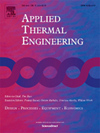
-
熱科學(xué)與工程進(jìn)展
Thermal Science And Engineering Progress
中科院 3區(qū) JCR Q1
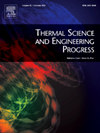
-
巖土學(xué)報
Acta Geotechnica
中科院 1區(qū) JCR Q1
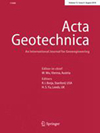
-
IEEE工業(yè)電子交易
Ieee Transactions On Industrial Electronics
中科院 1區(qū) JCR Q1
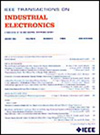
-
分離純化技術(shù)
Separation And Purification Technology
中科院 1區(qū) JCR Q1
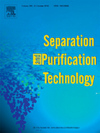
-
國際熱科學(xué)雜志
International Journal Of Thermal Sciences
中科院 2區(qū) JCR Q1
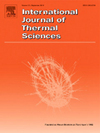
-
友邦日報
Aiaa Journal
中科院 3區(qū) JCR Q2
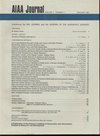
-
國際氫能雜志
International Journal Of Hydrogen Energy
中科院 2區(qū) JCR Q1

免責(zé)聲明
若用戶需要出版服務(wù),請聯(lián)系出版商:WILEY, 111 RIVER ST, HOBOKEN, USA, NJ, 07030-5774。